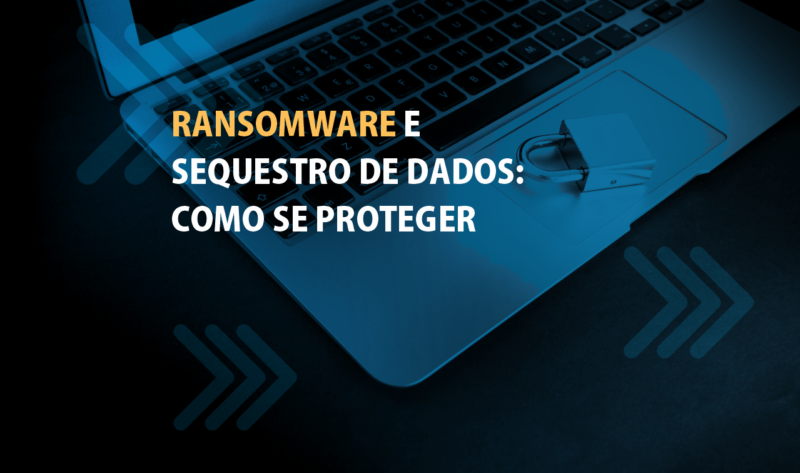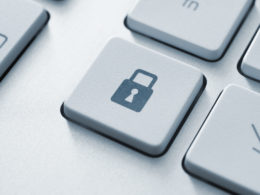Cybersecurity is an aspect that is gaining more and more visibility within companies. This is mainly due to the increase in the incidence of various cyber attacks around the world , affecting companies of all sizes and sectors. An example of this is the ransomware attack.
Ransomware is a type of digital threat that is being widely used today, and can cause numerous problems for businesses, such as the interruption of activities by blocking data or substantial financial losses.
Through this type of action, the cybercriminal blocks access to files and data from a specific company, institution or government body. Once this is done, the payment of a ransom is required to unlock it, configuring a form of extortion through the kidnapping of information.
In recent years, this type of cyber scam has gained a lot of visibility, mainly due to the impact it causes. According to a recent survey carried out by Trend Micro, a frightening number of companies have already suffered from Ransomware attacks (around 84% of North American companies). These massive attacks generated immense profit for criminals, resulting in US$400 million in losses.
Due to these losses, it is essential that the company prepares its employees and managers to be able to deal with this type of threat and avoid the impacts caused.
How the attack occurs
In most cases, the ransomware attack begins through a fake email, which seeks to trick the user into clicking on a malicious link that downloads harmful software. Another strategy used is phishing , which can be applied through fake pages, which disguise themselves as known websites, created specifically to distribute the digital threat.
Once downloaded, user data is encrypted, both available on the device and stored on the network, as long as the user has access to it. This encryption process will render the contents and data useless, and only with the encryption key can the files be restored to their original state.
During the application of the scam, the person responsible for the ransomware will leave some indication of how the victim should contact the cybercriminal. This can be done through a text file on the desktop or a wallpaper with a message , for example, which may contain an email address and contact instructions, with a view to negotiating the ransom.
One of the most efficient ways to protect your company's computers is by controlling access to harmful content. This can be done by using a tool or software to implement an internet access control filter. This feature allows you to block access to harmful websites, or only allow access to recognized websites with high security.
Preventive measures – how to prevent and avoid ransomware
The main ways to avoid ransomware attacks are related to some basic information security topics:
Beware of fake emails and websites
The first step is to establish an education protocol that seeks to inform users regarding their responsibility for the company's data and information. It is necessary to guide employees and managers about the risks to which their data may be exposed when they click on a link in an email or visit a website without paying attention to the origin of the email, the website address and its veracity. .
Internet access control
The use of protection tools against access to malicious websites is an extremely efficient and important solution for companies that want to increase the protection of their networks and devices. Through this type of control, the company is able to establish specific access rules and define which groups of users will have access to which types of websites.
This approach helps to avoid the use of websites that are inappropriate for the scope of the work and also the access to addresses with harmful content. Using this tool, the manager protects the network against websites used in phishing attacks , the spread of malware and ransomware.
Antivirus
Antiviruses are essential tools, especially on computers and servers with the Windows operating system. It is essential to use good antivirus software, remembering that it must be kept up to date and configured to perform periodic scans.
Just as technologies advance every day, new ways of invading networks and damaging files also emerge, so using this tool is an essential protocol to guarantee protection against the main cyber attacks.
Software Updates
In the same way that it is necessary to keep protection software updated, it is important to keep the operating system and other software packages updated. Updates are designed to include various fixes and improvements related to information security.
Access permissions
Access permissions refer to a very determining and commonly neglected aspect for companies. With a busy routine and activities that seem more important, it is common for managers to not pay attention to the level of access that users have on the company's systems and networks.
It is very relevant and important to check the level of access that each user or group of users needs in relation to files shared on the network, for example, in order not to provide access beyond what is necessary. If a group of users only needs to view certain files and not modify them, they have read-only access.
Administrative-level user accounts
The creation of administrative-level accounts, although necessary on certain occasions, should be avoided. An indiscriminate number of accounts of this type can favor the creation of points of vulnerability in the company's network, and make life easier for cybercriminals.
In the same way as the care regarding file access permissions, this measure limits the extent of damage that a user, even unintentionally, could cause to data.
Business continuity measures – how to proceed after the attack
With the advancement of security methodologies, some types of ransomware have already been decoded and compromised files can be recovered using dedicated tools, such as those made available by Kaspersky in the Ransomware Decryptor initiative. However, cybercriminals find new ways to invade systems and carry out their scams, making this a constant war to keep devices and networks safer.
Here are some steps that can help your business protect and recover after a ransomware attack:
Damage analysis
After a ransomware attack, it is necessary to check what damage was caused by the threat. To do this, it is necessary to check whether the company already has access to all files, networks and documents that may have been encrypted.
Since this type of cyber threat consists of the hijacking of information, it is essential that a team is responsible for verifying the integrity of the data that has been blocked so that the company can continue its activities safely.
Vulnerability check
To prevent the problem from recurring, it is necessary to evaluate it to find out how it happened. It is necessary for your company's IT team to carry out a complete scan to find vulnerabilities that may have facilitated this attack. Based on this information, it becomes easier to determine remedial measures and choose which security strategies should be implemented.
Backup recovery
There are several types of ransomware in the digital environment whose encryption remains impossible to reverse without the collaboration of the hijacker. The main effort that will solve the problem and guarantee business continuity after the ransomware attack is a basic measure that must be implemented as soon as possible: backup.
Although it seems like a simple strategy, it never hurts to remember the importance of having a reliable backup, from which important data can be recovered after any incident. The main way to solve the problem after data has been blocked by ransomware is to restore data from a backup.
The Backup Protocol must be implemented in such a way that there is a backup copy maintained in a location disconnected from the original location of the data. In other words, for security purposes, the backup cannot be stored on the same disk as the data used daily. This is because, in the specific case of ransomware , it is possible that the backup files are also blocked at the time of the attack , making the backup useless. It is important to have a backup copy in a location physically and logically separate from the original location.
Choose your security tool to prevent future attacks
The Lumiun Tecnologia team has already assisted numerous companies in analyzing ransomware attack cases in which there was no internet access control. In many of these cases, the attack and losses could be avoided with the correct tools, blocking access to harmful websites and content.
The absence of a valid data backup, stored in a location other than the original server, makes all the difference when recovering from a ransomware attack. When the damage is noticed, it is normal for a small panic and enormous concern about “what are we going to do now, without the data from our systems”.
As we said previously, the cybercriminal groups that carry out ransomware attacks suggest that, after blocking your files, you contact them to pay the ransom so that the data can be released. However, it is necessary to evaluate the risk of negotiating or paying the ransom, considering that there is no guarantee of data recovery.
This aspect further highlights how important it is to prevent attacks and prepare in advance for business continuity after an incident. I hope this article can make you understand all aspects of a ransomware attack in order to protect and keep your company data safe. Contact us to find the best solution to ensure the protection of your company's networks, devices and data.










12 comments
Comments closed